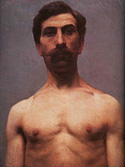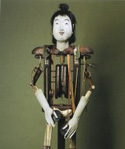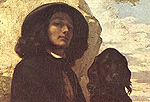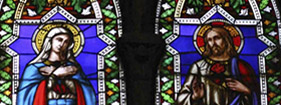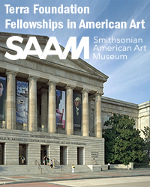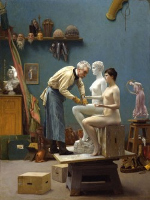X
Please wait for the PDF.
The browser will either open the file, download it, or display a dialog.
The browser will either open the file, download it, or display a dialog.

This study of Lewis Miller’s “Guide to Central Park” has taken several approaches in order to create a context for the album as well as to better understand the reception of Central Park in its opening years. In addition to two scholarly essays, this digital publication makes it possible to include a facsimile of the whole album accompanied by transcriptions and descriptions and links to notes, sources, and other relevant material.
While in Paris, Colombian artists were exposed to the female nude model for the first time. Despite its pedagogical and academic antecedents, the nude seriously challenged the insularity and conservatism of Colombian art. In so doing, these foreign-trained artists established the precedent of internationalism, which in turn ensured the flowering of Modernism in Colombia.
This article investigates the relationship between dolls and modernity as it was created and experienced in Japan. The author argues that dolls were instrumentalized as central vehicles through which new ideas were processed, reconfigured, and transmitted, and that they played a critical role in the imaginative process by which Japan constructed its modernity.
In 1854, a group of Mexican writers and artists published a collection of articles and illustrations that portrayed popular racial and social types entitled, Los mexicanos pintados por sí mismos. Produced out of a desire to capture local customs, costumes and occupations, Los mexicanos embraced the principles of the costumbrista genre just as it was also indebted to its European predecessors, such as Heads of the People (1840), Les Français peints par eux-mêmes (1841–42) and Los españoles pintados por sí mismos (1843–44). In its carefully orchestrated selection of representations, Los mexicanos reveals how the Mexican literary elite sought to position themselves vis-à-vis other nations during the post-independence period and demonstrates how images of popular racial and social types were important to the formation of a new national subjectivity.
The discursive influence of the nineteenth-century genre of physiologies, such as Les Français peints par eux-mêmes, has escaped the attention of art historians. Gustave Courbet however made extensive references to both the techniques of representation and the represented types presented in these texts. This article shows that Courbet engaged in a socio-cultural discourse on physiologies, which, in turn, aligns him with Honoré Balzac’s physiological methods of describing characters with physical traits and manners of dress and within topographic locales through which authors and readers identified the characters’ social status. Both artist and writer replicate the verbal-visual hermeneutic of the physiologies, thereby fixing contemporary social types in the collective visual and textual imagination during the mid-nineteenth century.
This article examines Ulisse De Matteis’s 1869 stained-glass window of the Immaculate Conception created for the English expatriate Francis Sloane for his newly acquired chapel in Santa Croce, Florence, within the context of 19th-century Italian religious and political debates. Following a discussion of the spiritual agenda of Pius IX, the medieval revival stained-glass techniques of De Matteis, and the religious and political beliefs of Sloane, the author argues that the Sloane window was a conservative Catholic, or Ultramontane, response to the modern and secular world embraced by the new liberal Tuscan and Italian national governments that came into being after Leopold II, the last of the Habsburg Grand Dukes to rule Tuscany, left Florence peacefully in 1859.



